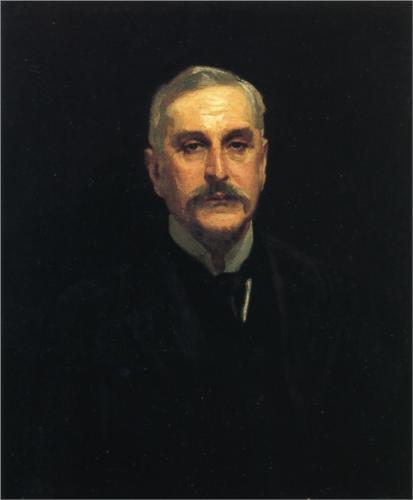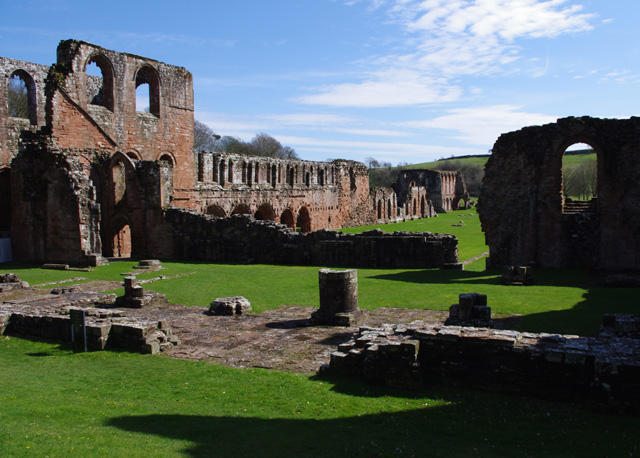|
HMS E23
HMS ''E23'' was an E-class submarine built by Vickers, Barrow-in-Furness. She was laid down on 28 September 1914 and was commissioned on 6 December 1915. ''E23'' torpedoed the German dreadnought (18,900 tons), holing her off Terschelling on 19 August 1916. ''E23'' was sold on 6 September 1922 in Sunderland. Design Like all post-''E8'' British E-class submarines, ''E23'' had a displacement of at the surface and while submerged. She had a length of and a beam of . She was powered by two Vickers eight-cylinder two-stroke diesel engines and two electric motors.Akerman, P. (1989). ''Encyclopaedia of British submarines 1901–1955''. p.150. Maritime Books. The submarine had a maximum surface speed of and a submerged speed of . British E-class submarines had a fuel capacity of of diesel and ranges of when travelling at . ''E23'' was capable of operating submerged for five hours when travelling at . ''E23'' was armed with a 12-pounder QF gun, mounted forward of the ... [...More Info...] [...Related Items...] OR: [Wikipedia] [Google] [Baidu] |
Vickers Limited
Vickers Limited was a British engineering conglomerate. The business began in Sheffield in 1828 as a steel foundry and became known for its church bells, going on to make shafts and propellers for ships, armour plate and then artillery. Entire large ships, cars, tanks and torpedoes followed. Airships and aircraft were added, and Vickers jet airliners were to remain in production until 1965. Financial problems following the death of the Vickers brothers were resolved in 1927 by separating Metropolitan Carriage Wagon and Finance Company and Metropolitan-Vickers, then merging the remaining bulk of the original business with Armstrong Whitworth to form Vickers-Armstrongs. The Vickers name resurfaced as Vickers plc between 1977 and 1999. History Foundry Vickers was formed in Sheffield as a steel foundry by the miller Edward Vickers and his father-in-law George Naylor in 1828. Naylor was a partner in the foundry Naylor & Sanderson, and Vickers' brother William owned a steel ... [...More Info...] [...Related Items...] OR: [Wikipedia] [Google] [Baidu] |
Sunderland, Tyne And Wear
Sunderland () is a port city in Tyne and Wear, England. It is the City of Sunderland's administrative centre and in the historic county of Durham. The city is from Newcastle-upon-Tyne and is on the River Wear's mouth to the North Sea. The river also flows through Durham roughly south-west of Sunderland City Centre. It is the only other city in the county and the second largest settlement in the North East after Newcastle upon Tyne. Locals from the city are sometimes known as Mackems. The term originated as recently as the early 1980s; its use and acceptance by residents, particularly among the older generations, is not universal. At one time, ships built on the Wear were called "Jamies", in contrast with those from the Tyne, which were known as "Geordies", although in the case of "Jamie" it is not known whether this was ever extended to people. There were three original settlements by the River's mouth which are part of the modern-day city: Monkwearmouth, settled in ... [...More Info...] [...Related Items...] OR: [Wikipedia] [Google] [Baidu] |
1915 Ships
Events Below, the events of World War I have the "WWI" prefix. January *January – British physicist Sir Joseph Larmor publishes his observations on "The Influence of Local Atmospheric Cooling on Astronomical Refraction". *January 1 ** WWI: British Royal Navy battleship HMS Formidable (1898), HMS ''Formidable'' is sunk off Lyme Regis, Dorset, England, by an Imperial German Navy U-boat, with the loss of 547 crew. **Battle of Broken Hill: A train ambush near Broken Hill, New South Wales, Australia, is carried out by two men (claiming to be in support of the Ottoman Empire) who are killed, together with 4 civilians. * January 5 – Joseph E. Carberry sets an altitude record of , carrying Capt. Benjamin Delahauf Foulois as a passenger, in a fixed-wing aircraft. * January 12 ** The United States House of Representatives rejects a proposal to give women the right to vote. ** ''A Fool There Was (1915 film), A Fool There Was'' premières in the United States, starring Theda Bar ... [...More Info...] [...Related Items...] OR: [Wikipedia] [Google] [Baidu] |
Ships Built In Barrow-in-Furness
A ship is a large watercraft that travels the world's oceans and other sufficiently deep waterways, carrying cargo or passengers, or in support of specialized missions, such as defense, research, and fishing. Ships are generally distinguished from boats, based on size, shape, load capacity, and purpose. Ships have supported exploration, trade, warfare, migration, colonization, and science. After the 15th century, new crops that had come from and to the Americas via the European seafarers significantly contributed to world population growth. Ship transport is responsible for the largest portion of world commerce. The word ''ship'' has meant, depending on the era and the context, either just a large vessel or specifically a ship-rigged sailing ship with three or more masts, each of which is square-rigged. As of 2016, there were more than 49,000 merchant ships, totaling almost 1.8 billion dead weight tons. Of these 28% were oil tankers, 43% were bulk carriers, and 13% were ... [...More Info...] [...Related Items...] OR: [Wikipedia] [Google] [Baidu] |
British E-class Submarines Of The Royal Navy
British may refer to: Peoples, culture, and language * British people, nationals or natives of the United Kingdom, British Overseas Territories, and Crown Dependencies. ** Britishness, the British identity and common culture * British English, the English language as spoken and written in the United Kingdom or, more broadly, throughout the British Isles * Celtic Britons, an ancient ethno-linguistic group * Brittonic languages, a branch of the Insular Celtic language family (formerly called British) ** Common Brittonic, an ancient language Other uses *''Brit(ish)'', a 2018 memoir by Afua Hirsch *People or things associated with: ** Great Britain, an island ** United Kingdom, a sovereign state ** Kingdom of Great Britain (1707–1800) ** United Kingdom of Great Britain and Ireland (1801–1922) See also * Terminology of the British Isles * Alternative names for the British * English (other) * Britannic (other) * British Isles * Brit (other) * Bri ... [...More Info...] [...Related Items...] OR: [Wikipedia] [Google] [Baidu] |
Fessenden Oscillator
A Fessenden oscillator is an electro-acoustic transducer invented by Reginald Fessenden, with development starting in 1912 at the Submarine Signal Company of Boston. It was the first successful acoustical echo ranging device. Similar in operating principle to a dynamic voice coil loudspeaker, it was an early kind of transducer, capable of creating underwater sounds and of picking up their echoes. The creation of this device was motivated by the RMS ''Titanic'' disaster of 1912, which highlighted the need to protect ships from collisions with icebergs, obstacles, and other ships. Because of its relatively low operating frequency, it has been replaced in modern transducers by piezoelectric devices. Oscillator The ''oscillator'' in the name referred to the fact that the device vibrated and moved water in response to a driving AC current. It was not an electronic oscillator but a mechanical one in that it generated repetitive mechanical vibrations. Electronic oscillators did no ... [...More Info...] [...Related Items...] OR: [Wikipedia] [Google] [Baidu] |
Quick Firing Gun
A quick-firing or rapid-firing gun is an artillery piece, typically a gun or howitzer, which has several characteristics which taken together mean the weapon can fire at a fast rate. Quick-firing was introduced worldwide in the 1880s and 1890s and had a marked impact on war both on land and at sea. Characteristics The characteristics of a quick-firing artillery piece are: *A breech-loading weapon with a breech mechanism that allows rapid reloading *Single-part cased ammunition, i.e. a cartridge containing both shell and propellant *Recoil buffers to limit recoil, so the barrel can quickly return to the same position after firing *The use of smokeless powder – nitrocellulose, nitroglycerine, or cordite – which create far less smoke than gunpowder, meaning that gun crews could still see their target These innovations, taken together, meant that the quick-firer could fire aimed shells much more rapidly than an older weapon. For instance, an Elswick Ordnance Company 4.7-inch gun ... [...More Info...] [...Related Items...] OR: [Wikipedia] [Google] [Baidu] |
QF 12-pounder 12 Cwt Naval Gun
The QF 12-pounder 12-cwt gun (abbreviated as Q.F. 12-pdr. (12-cwt.)Gun drill for Q.F. 12-pdr. (12-cwt.) gun (Land service) 1925 the War Office, 1925) was a common, versatile calibre naval gun introduced in 1894 and used until the middle of the 20th century. It was produced by , Elswick and used on warships, exported to alli ... [...More Info...] [...Related Items...] OR: [Wikipedia] [Google] [Baidu] |
Terschelling
Terschelling (; fry, Skylge; Terschelling dialect: ''Schylge'') is a municipality and an island in the northern Netherlands, one of the West Frisian Islands. It is situated between the islands of Vlieland and Ameland. Wadden Islanders are known for their resourcefulness in using anything and everything that washes ashore. With few trees to use for timber, most of the farms and barns are built with masts recovered from shipwrecks. The islands are surrounded by shipwrecks, and even today many containers wash ashore that have blown off the decks of container ships in the North Sea. The main source of income on Terschelling is tourism. There is some agriculture, but a large part of the island has become a nature reserve. Terschelling is well known for the yearly Oerol Festival during which theatre performances are played throughout the island, making use of its landscape and nature. Terschelling can be reached by ferry from the mainland Frisian town Harlingen and from Vliela ... [...More Info...] [...Related Items...] OR: [Wikipedia] [Google] [Baidu] |
Barrow-in-Furness
Barrow-in-Furness is a port town in Cumbria, England. Historically in Lancashire, it was incorporated as a municipal borough in 1867 and merged with Dalton-in-Furness Urban District in 1974 to form the Borough of Barrow-in-Furness. In 2023 the borough will merge with Eden and South Lakeland districts to form a new unitary authority; Westmorland and Furness. At the tip of the Furness peninsula, close to the Lake District, it is bordered by Morecambe Bay, the Duddon Estuary and the Irish Sea. In 2011, Barrow's population was 56,745, making it the second largest urban area in Cumbria after Carlisle. Natives of Barrow, as well as the local dialect, are known as Barrovian. In the Middle Ages, Barrow was a small hamlet within the parish of Dalton-in-Furness with Furness Abbey, now on the outskirts of the town, controlling the local economy before its dissolution in 1537. The iron prospector Henry Schneider arrived in Furness in 1839 and, with other investors, opened th ... [...More Info...] [...Related Items...] OR: [Wikipedia] [Google] [Baidu] |
Dreadnought
The dreadnought (alternatively spelled dreadnaught) was the predominant type of battleship in the early 20th century. The first of the kind, the Royal Navy's , had such an impact when launched in 1906 that similar battleships built after her were referred to as "dreadnoughts", and earlier battleships became known as pre-dreadnoughts. Her design had two revolutionary features: an "all-big-gun" armament scheme, with an unprecedented number of heavy-calibre guns, and steam turbine propulsion. As dreadnoughts became a crucial symbol of national power, the arrival of these new warships renewed the naval arms race between the United Kingdom and Germany. Dreadnought races sprang up around the world, including in South America, lasting up to the beginning of World War I. Successive designs increased rapidly in size and made use of improvements in armament, armour and propulsion throughout the dreadnought era. Within five years, new battleships outclassed ''Dreadnought'' herself. ... [...More Info...] [...Related Items...] OR: [Wikipedia] [Google] [Baidu] |




_12-pounder_gun.jpg)


